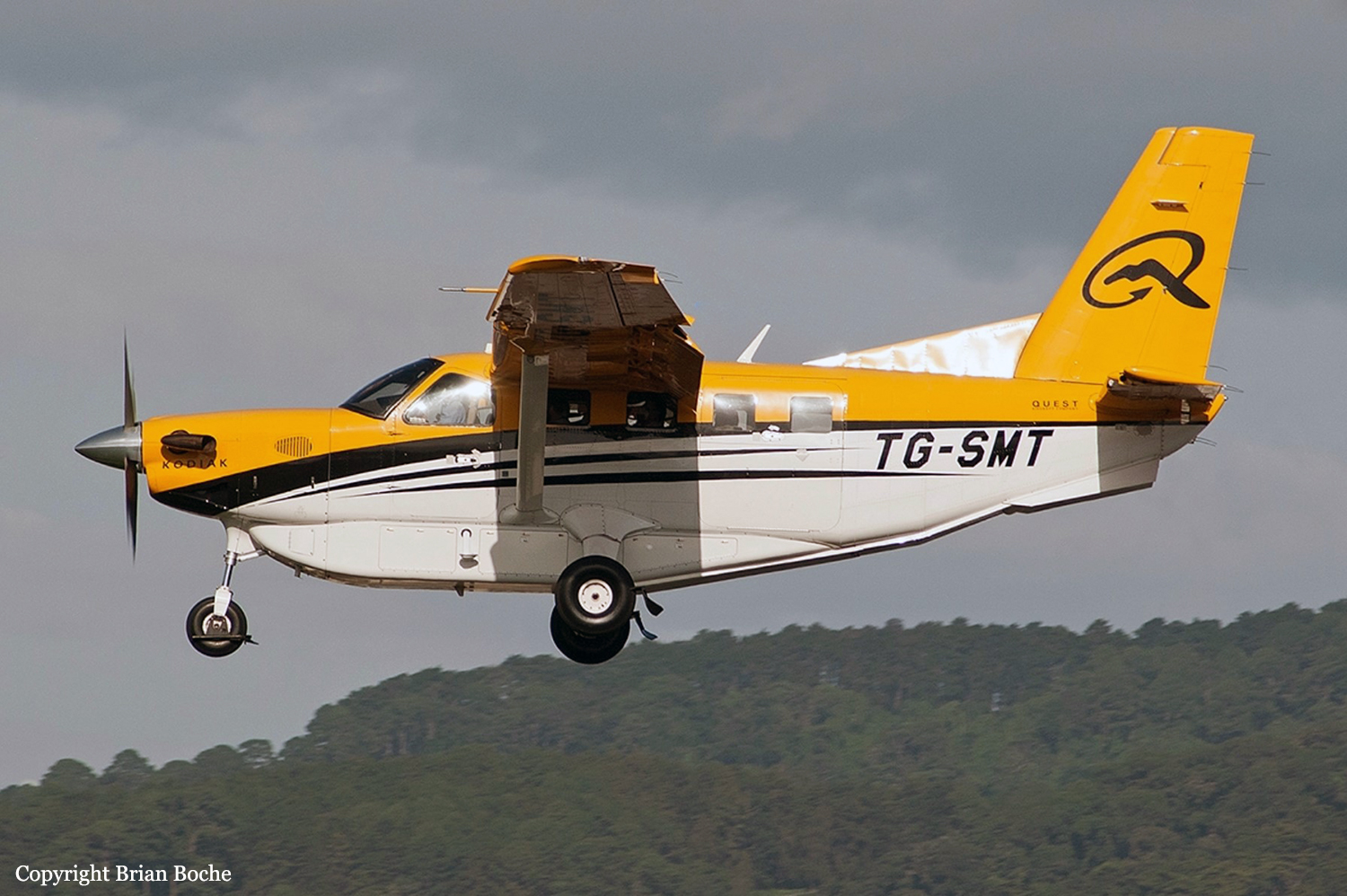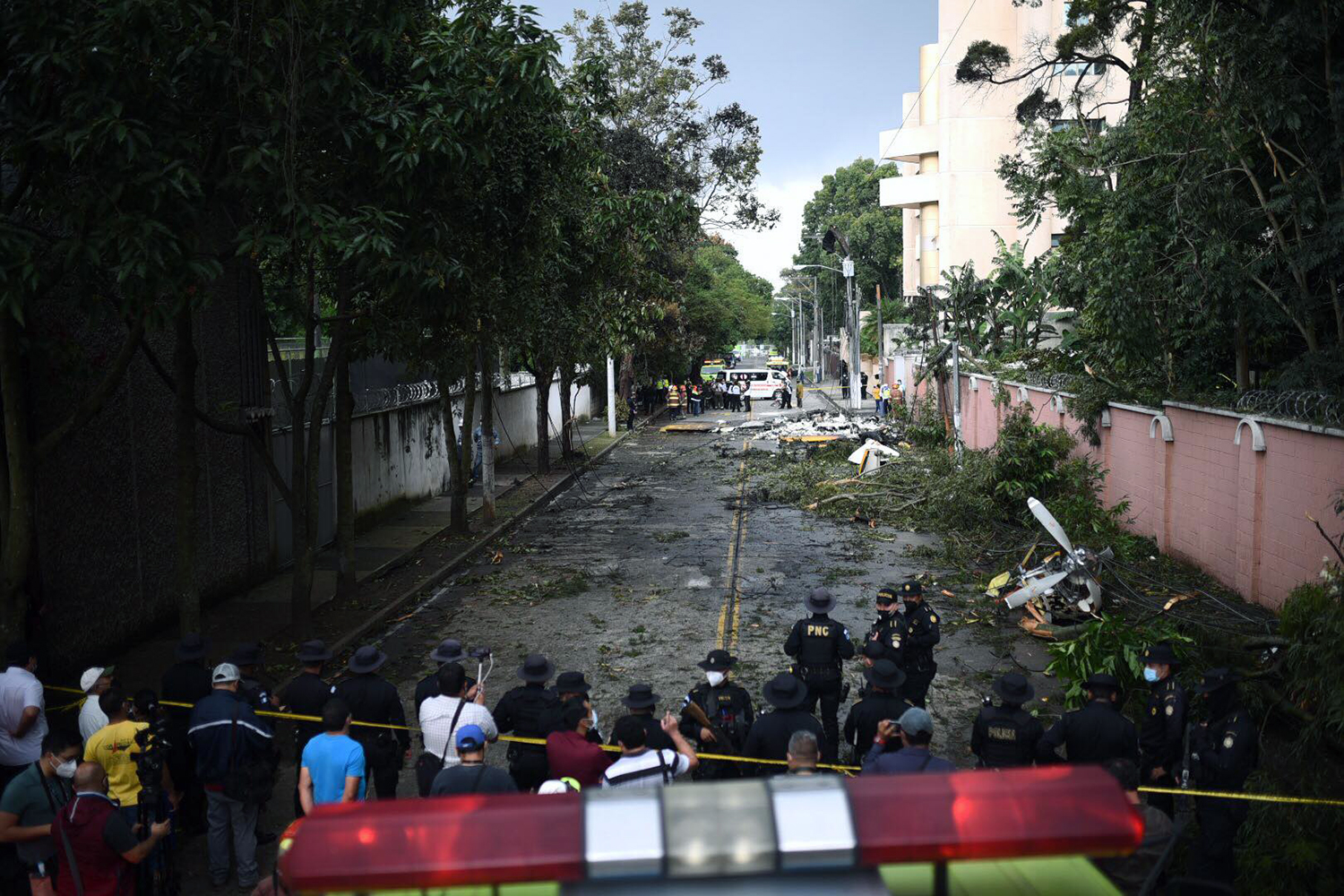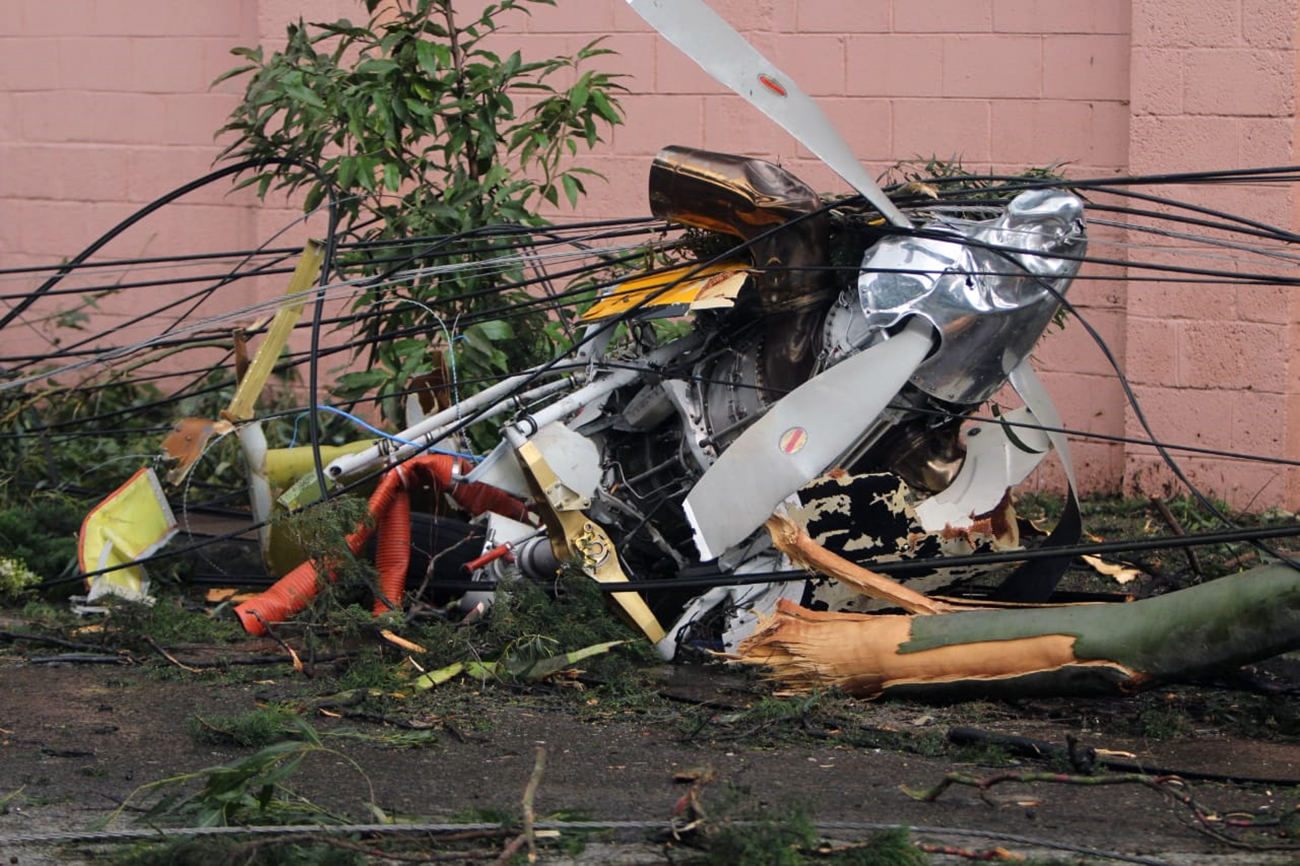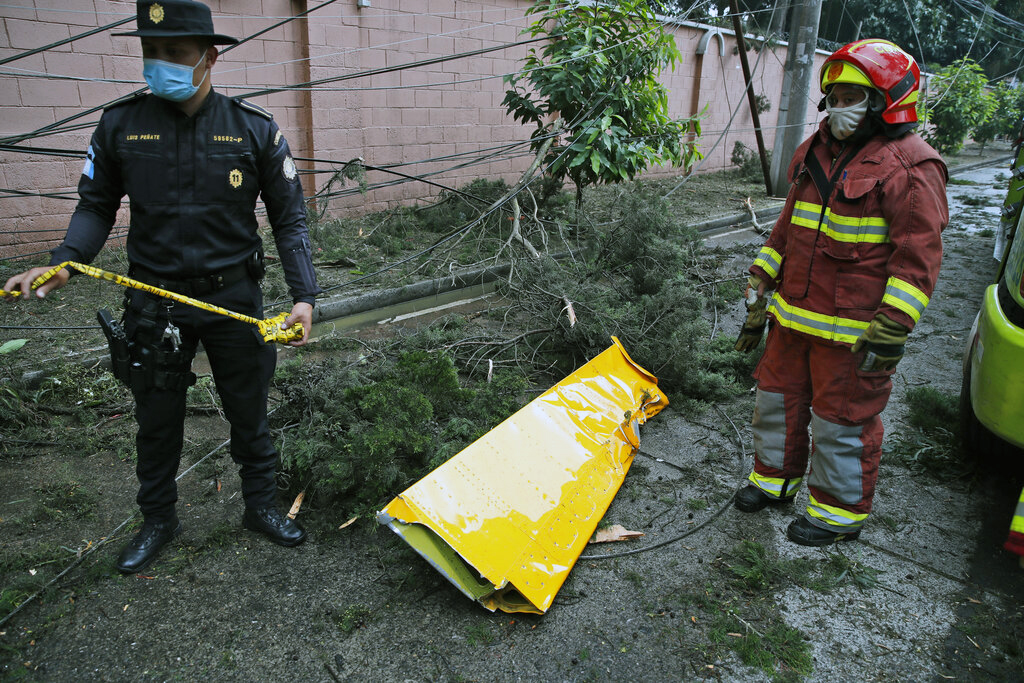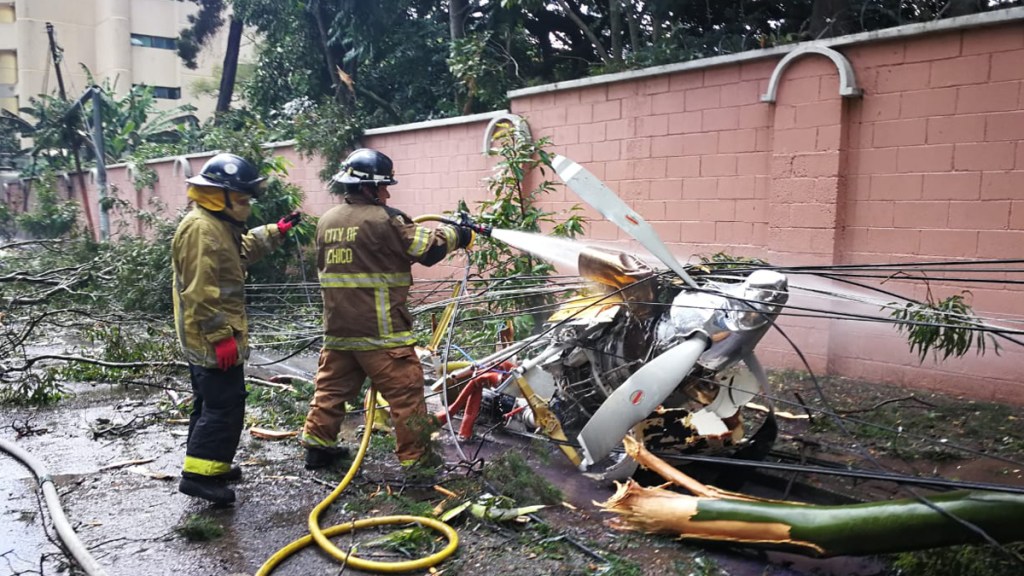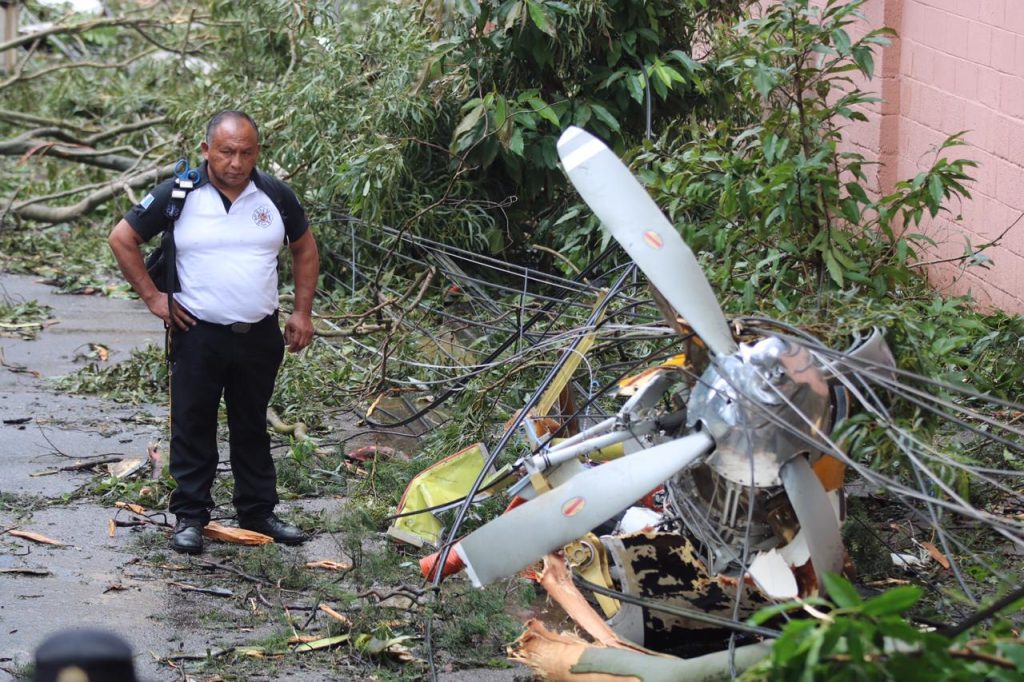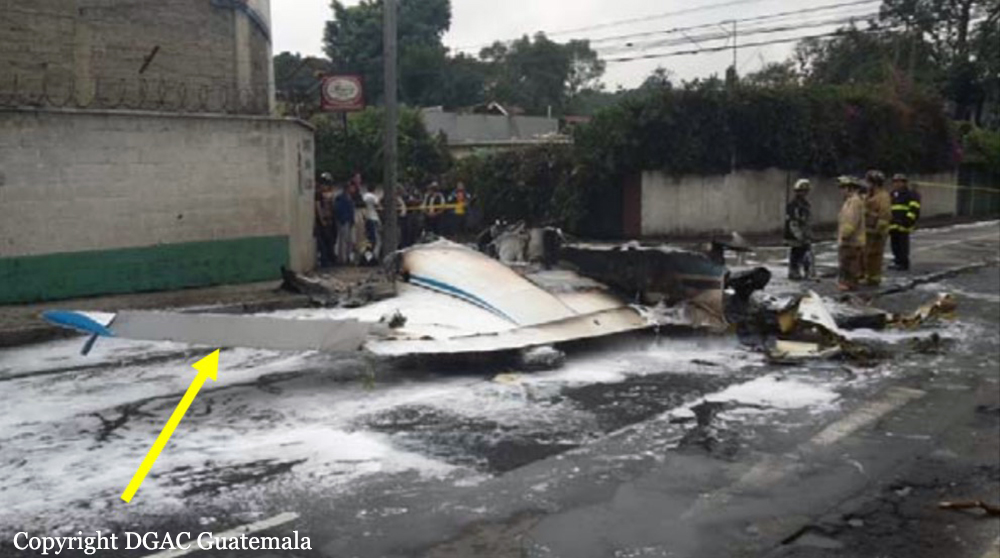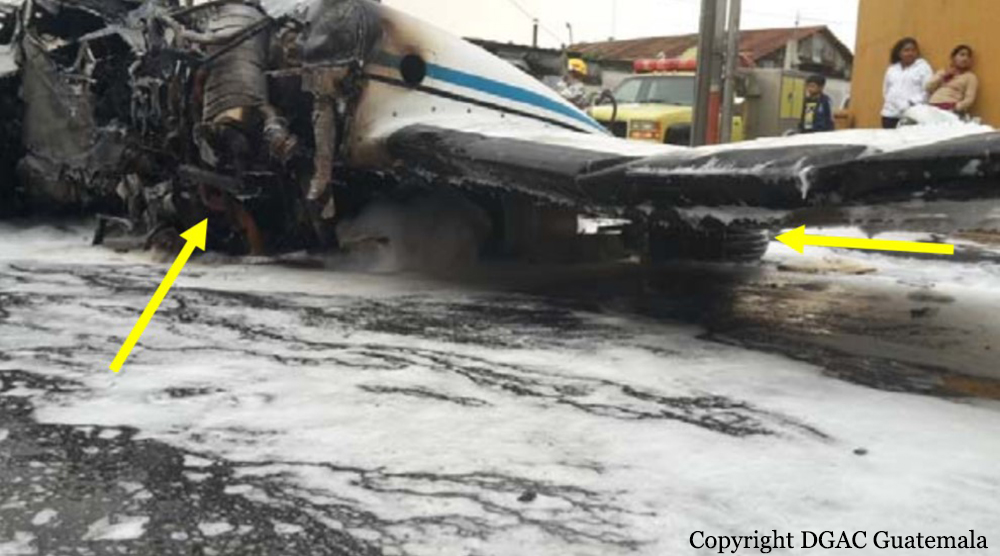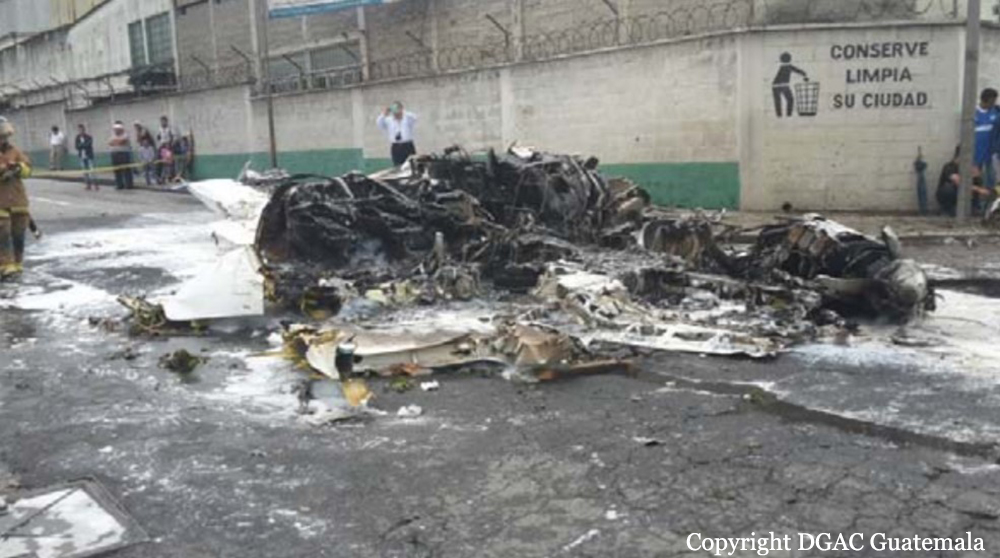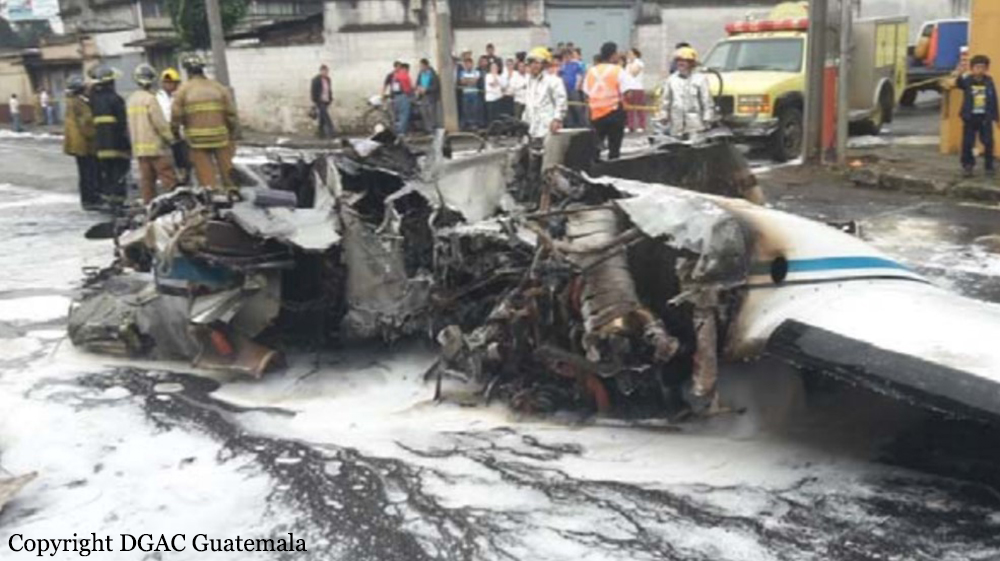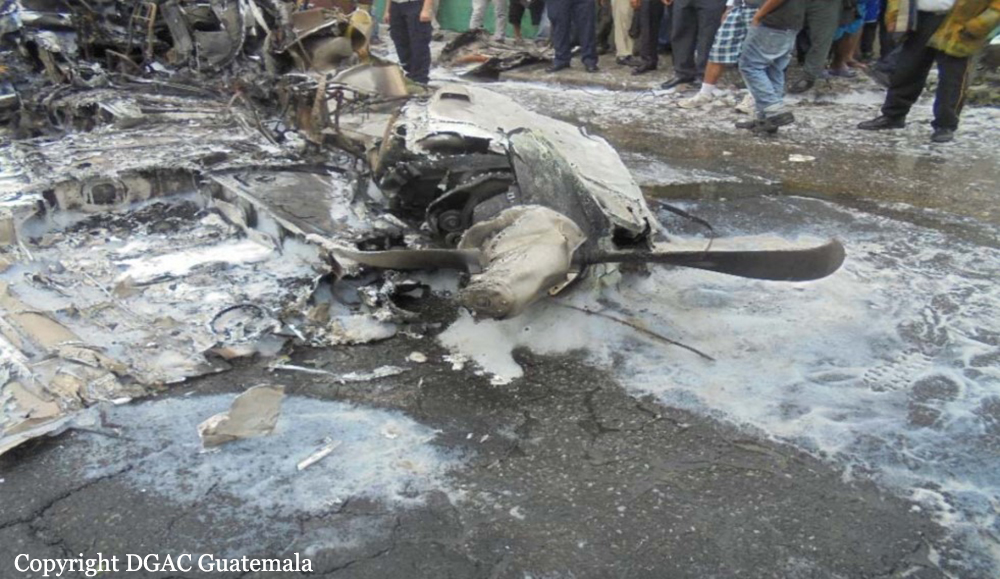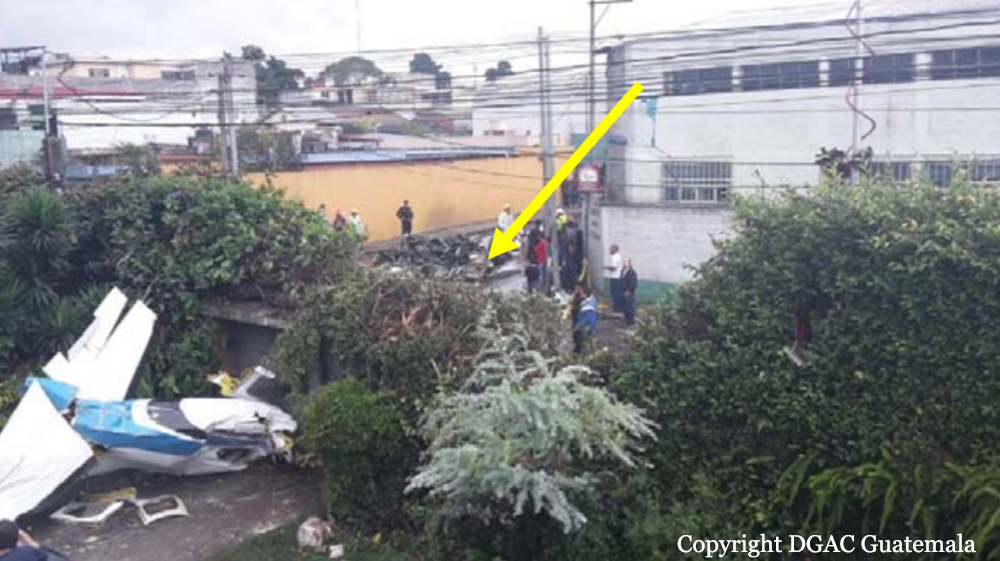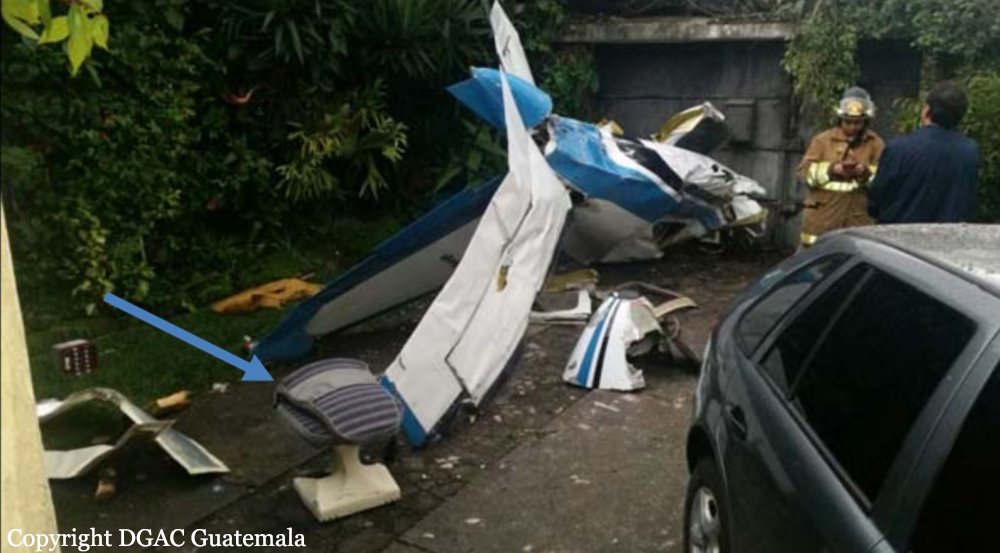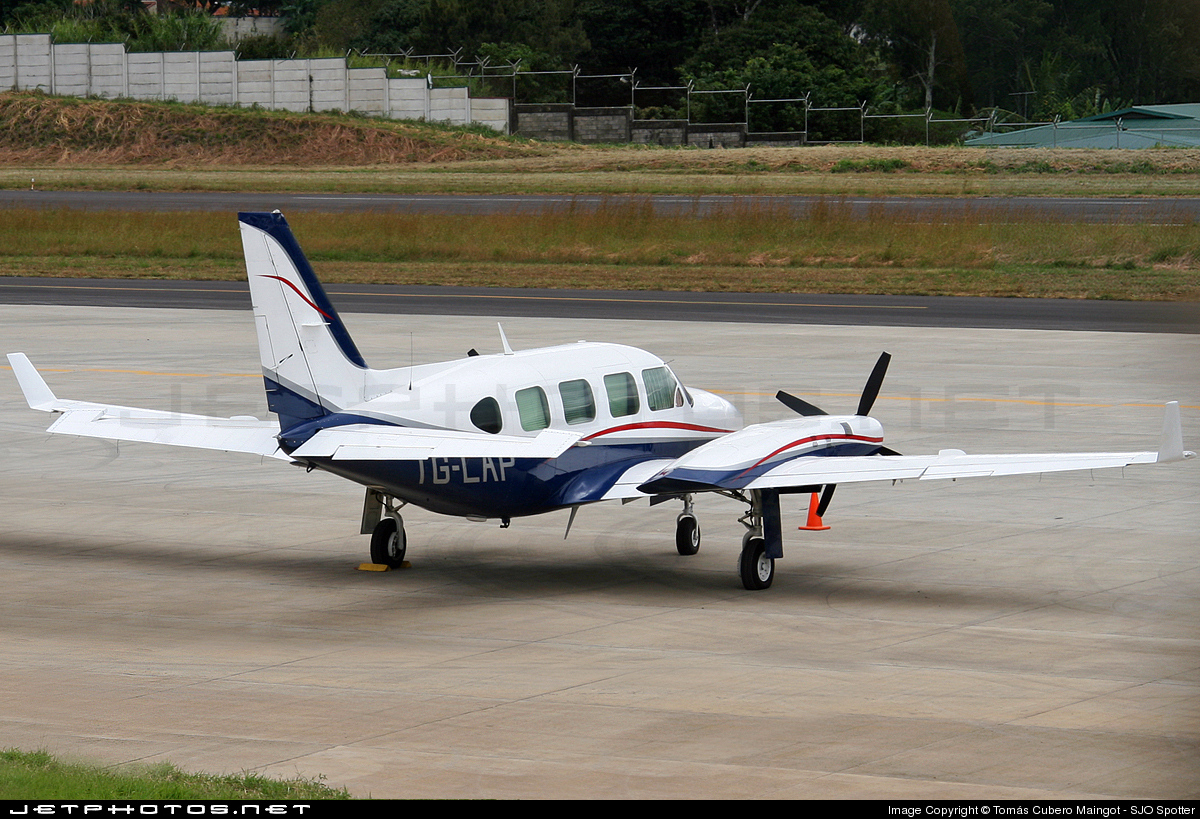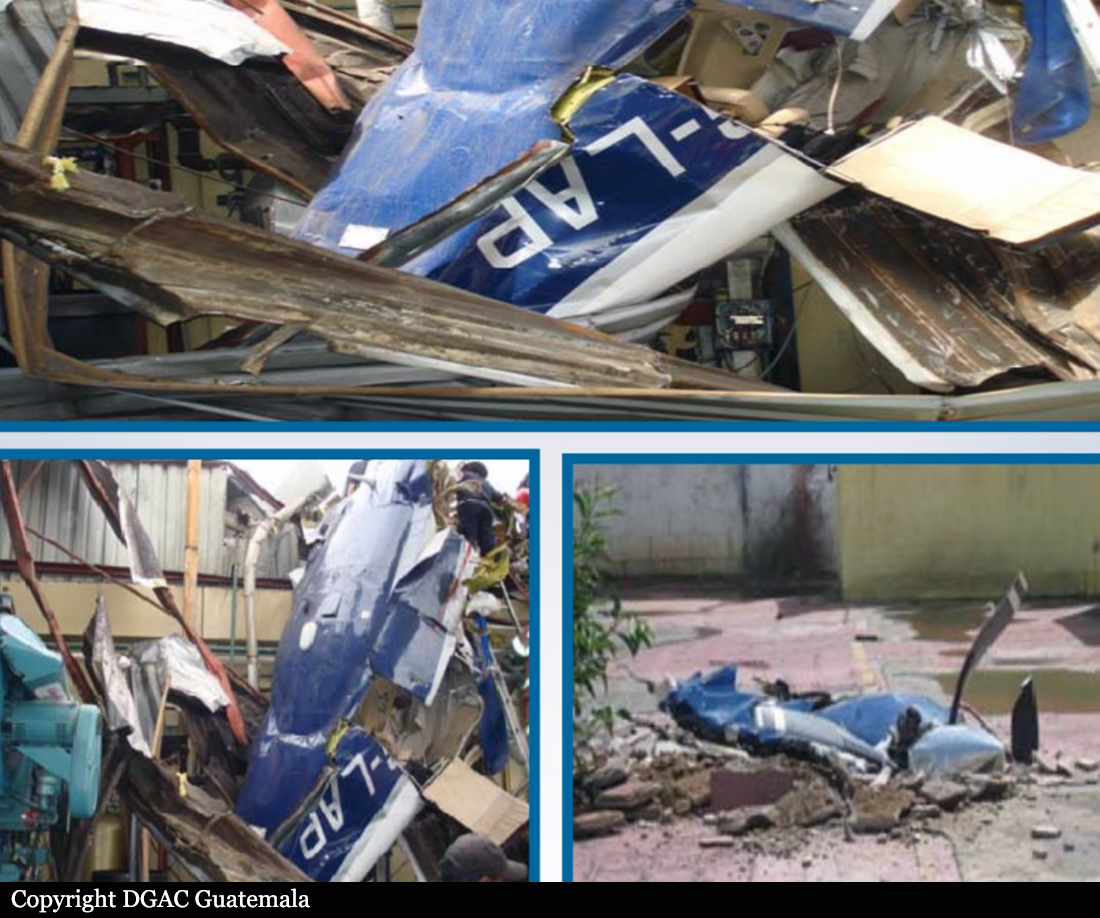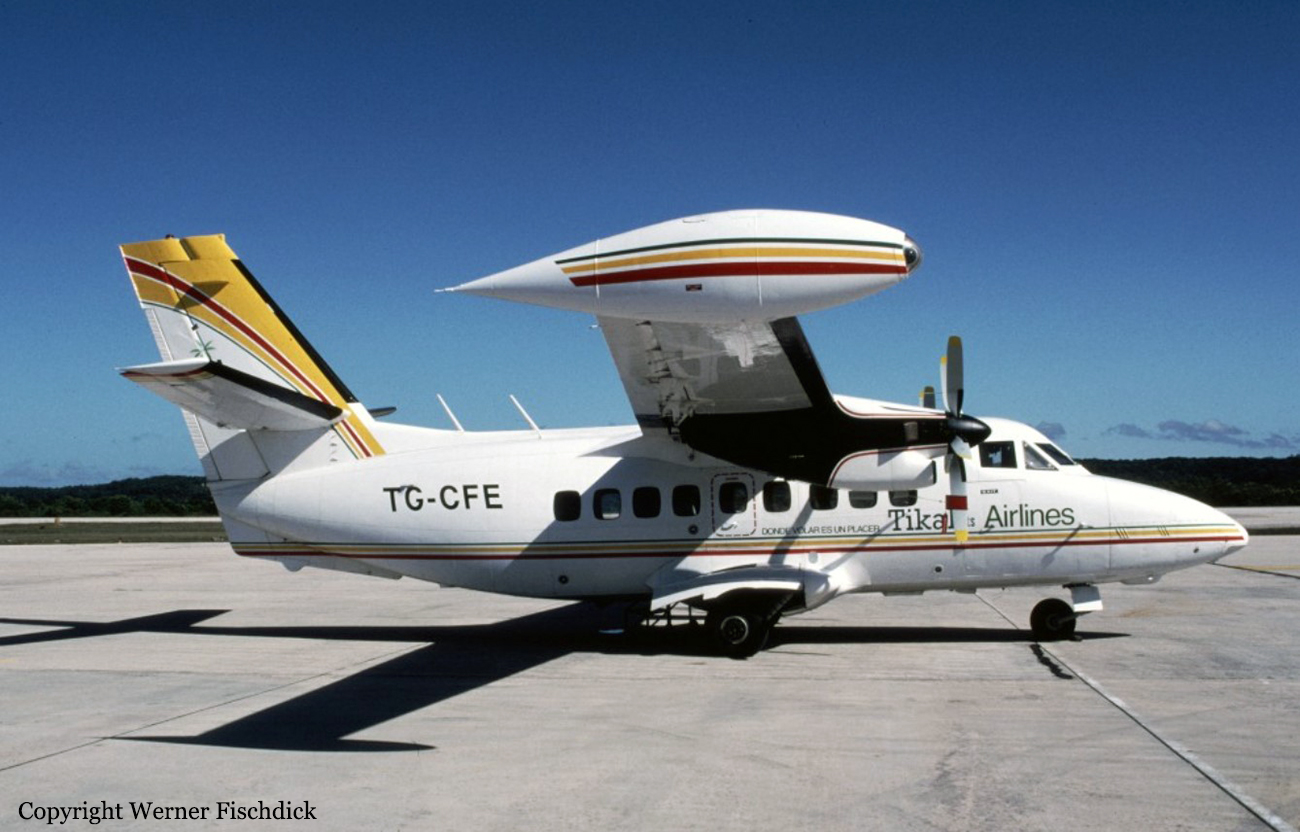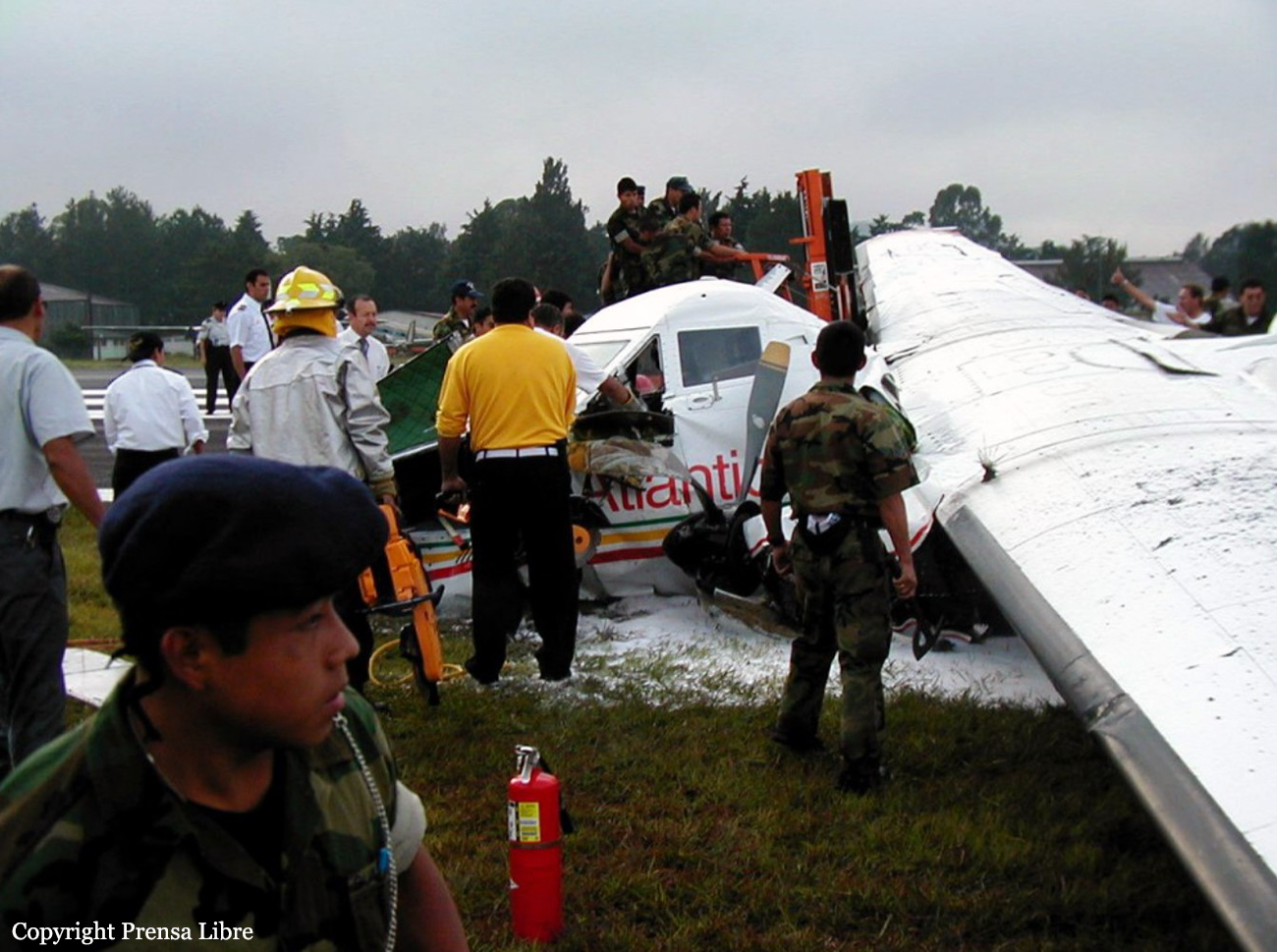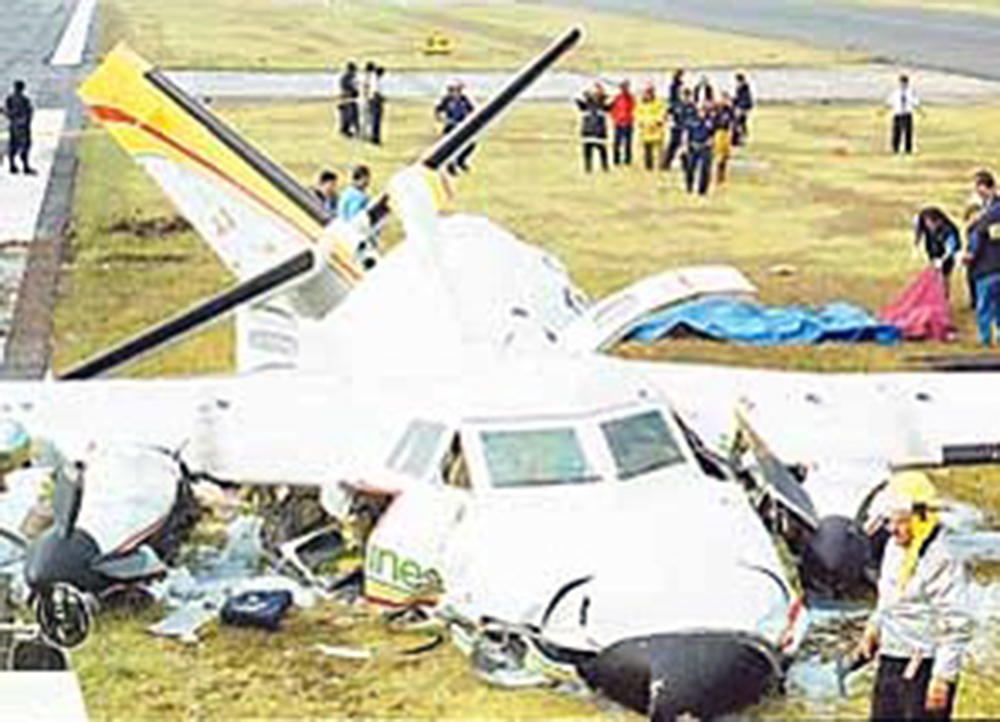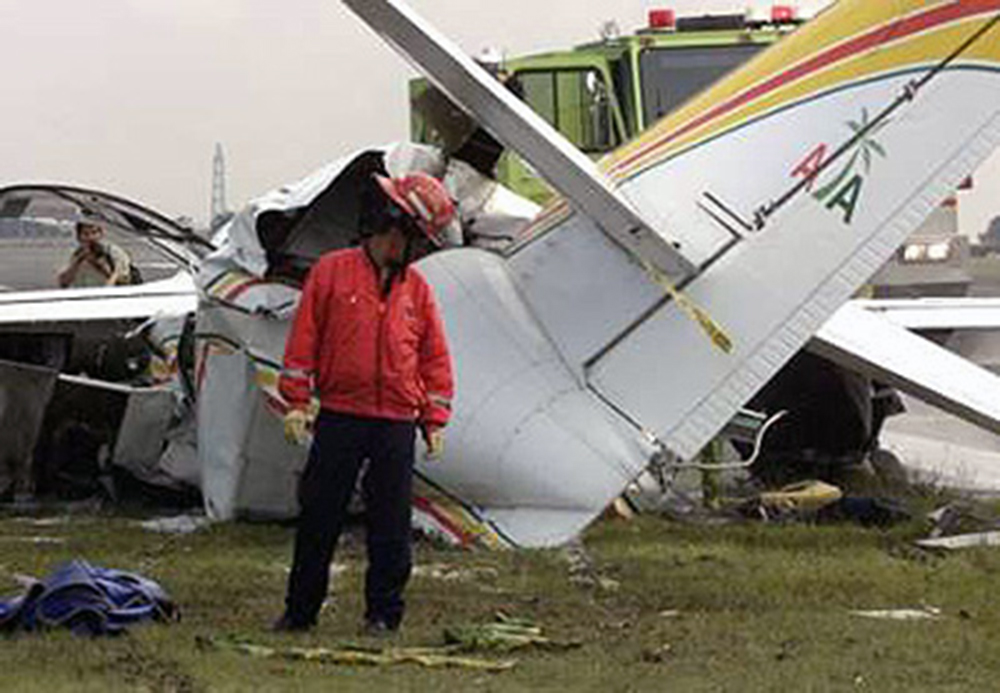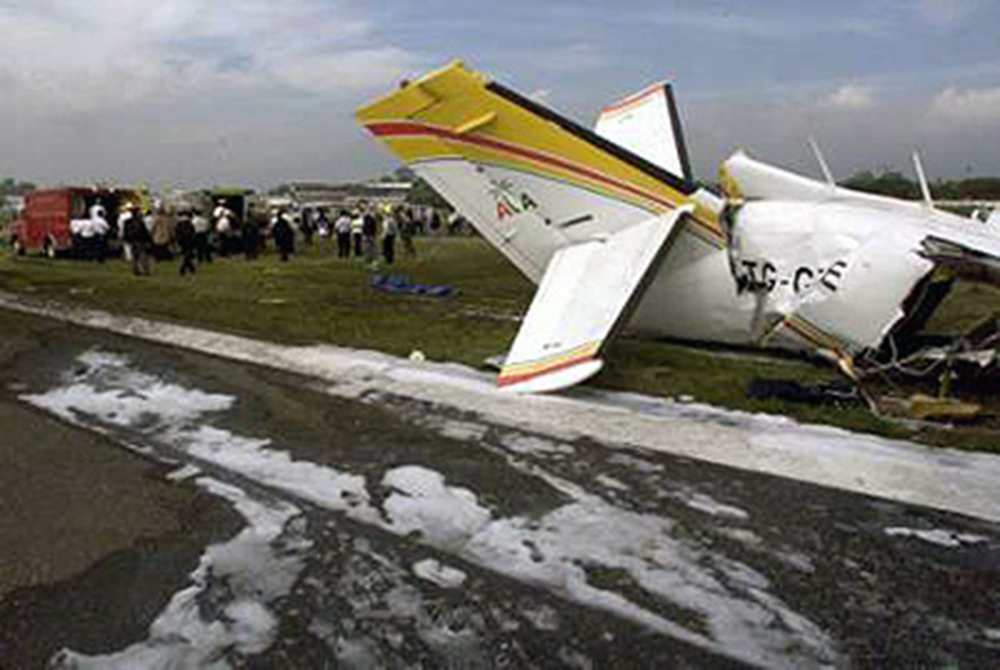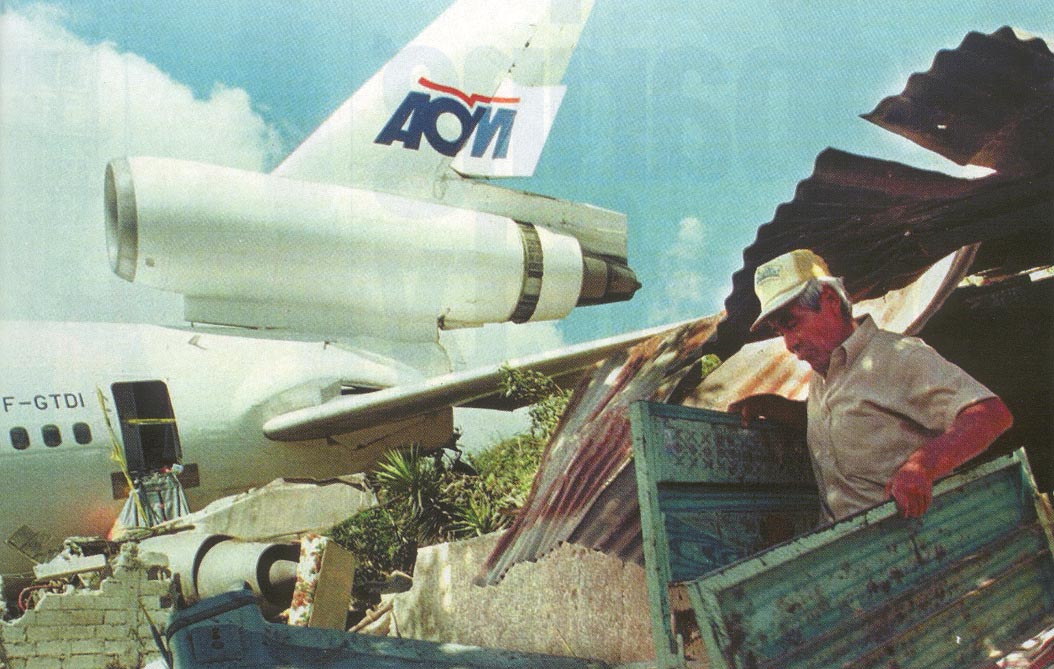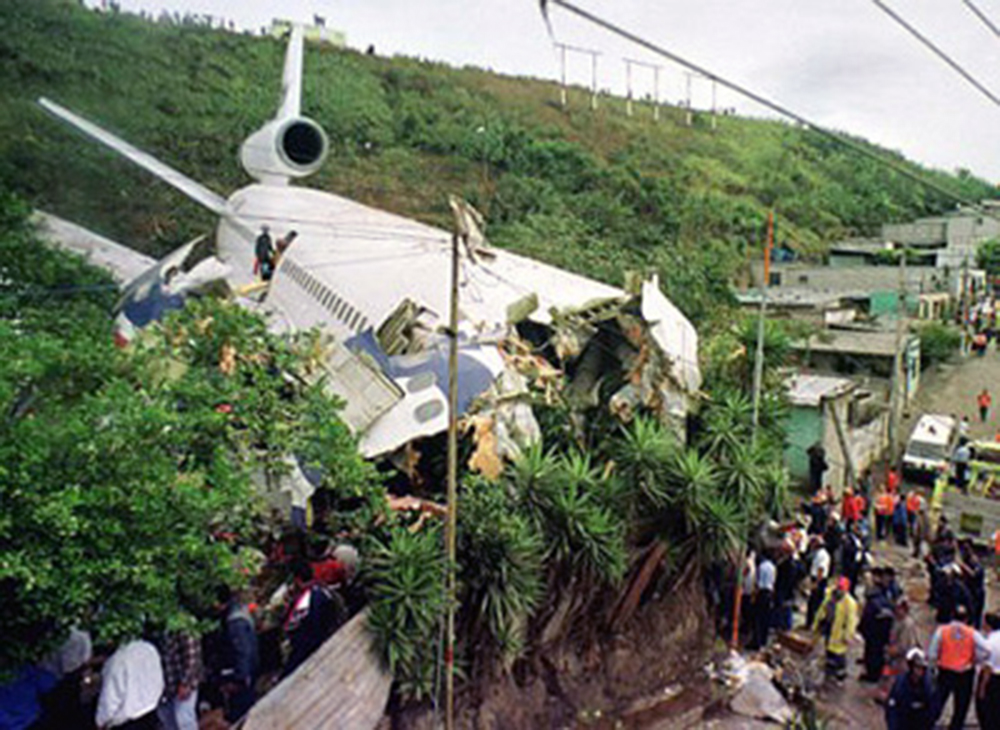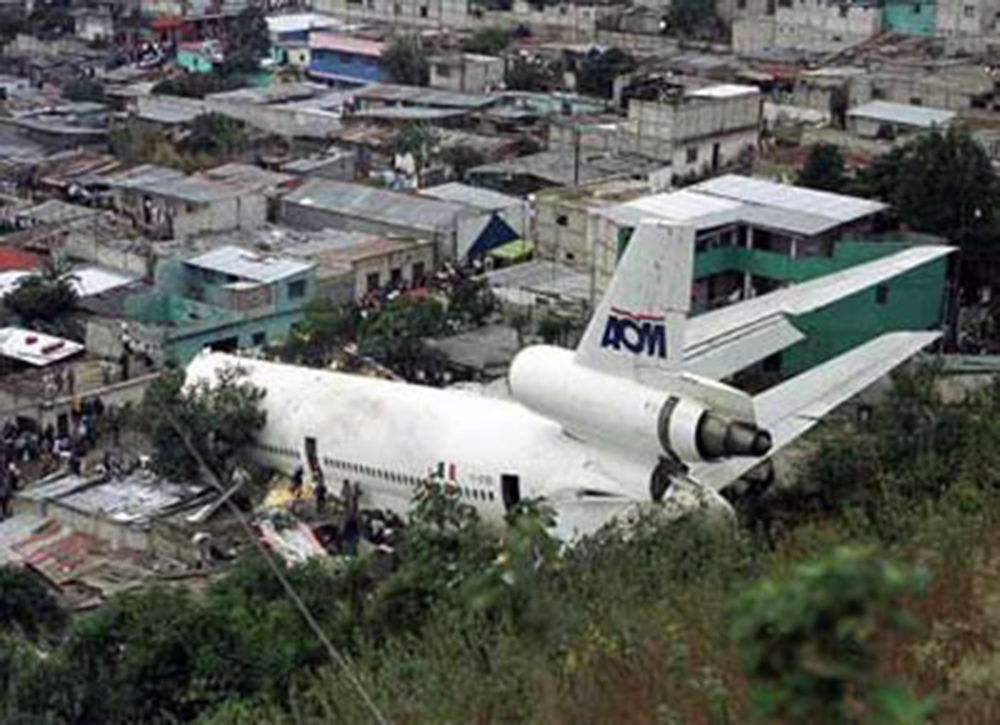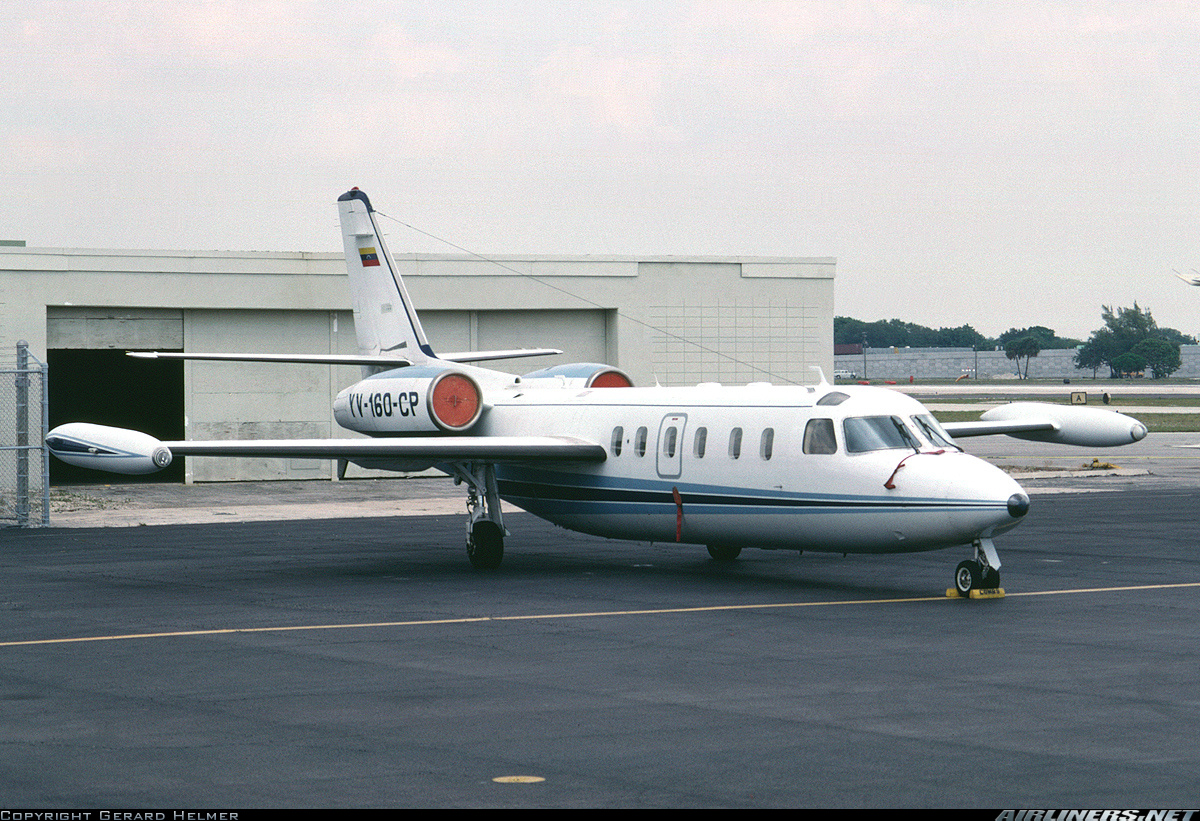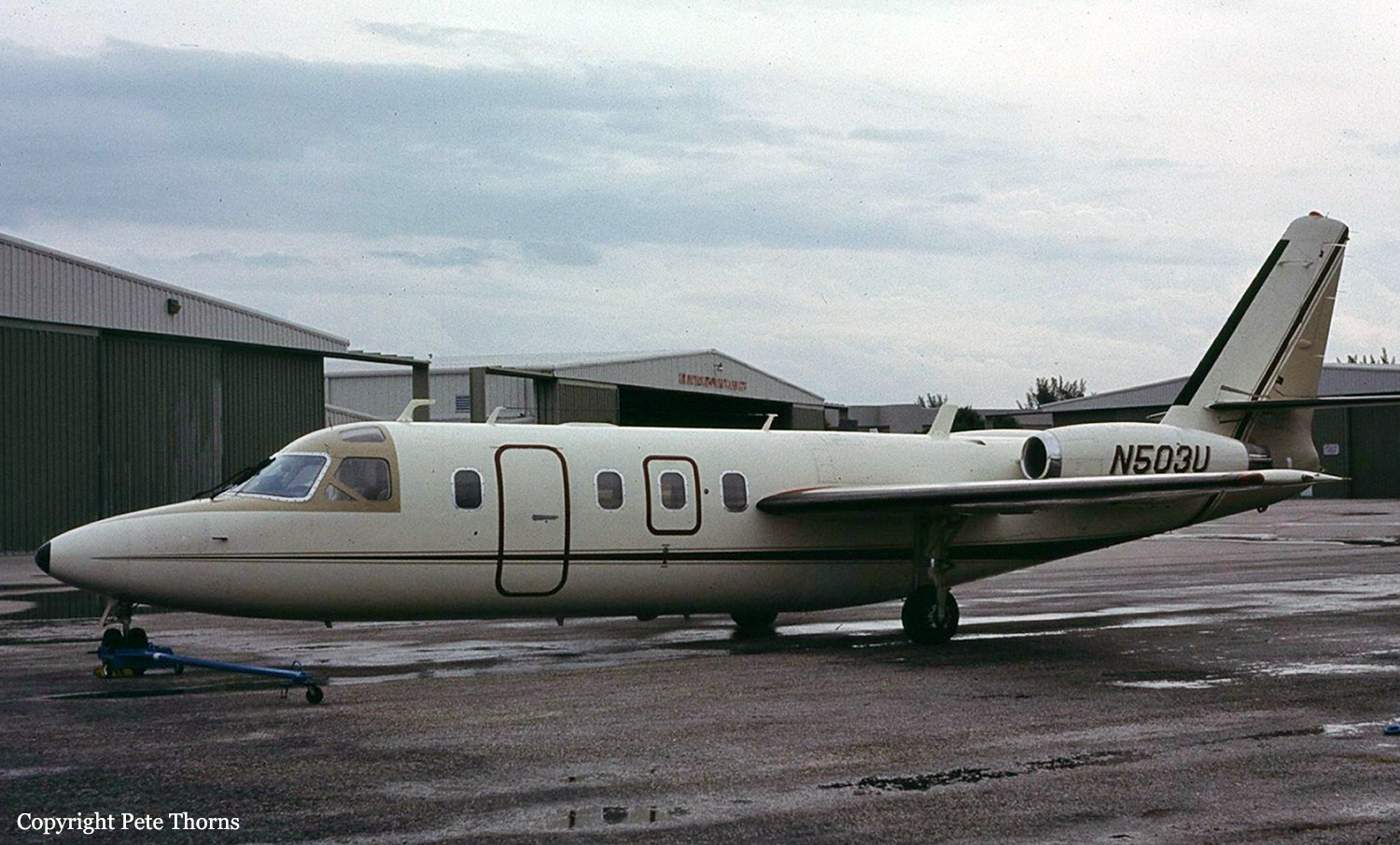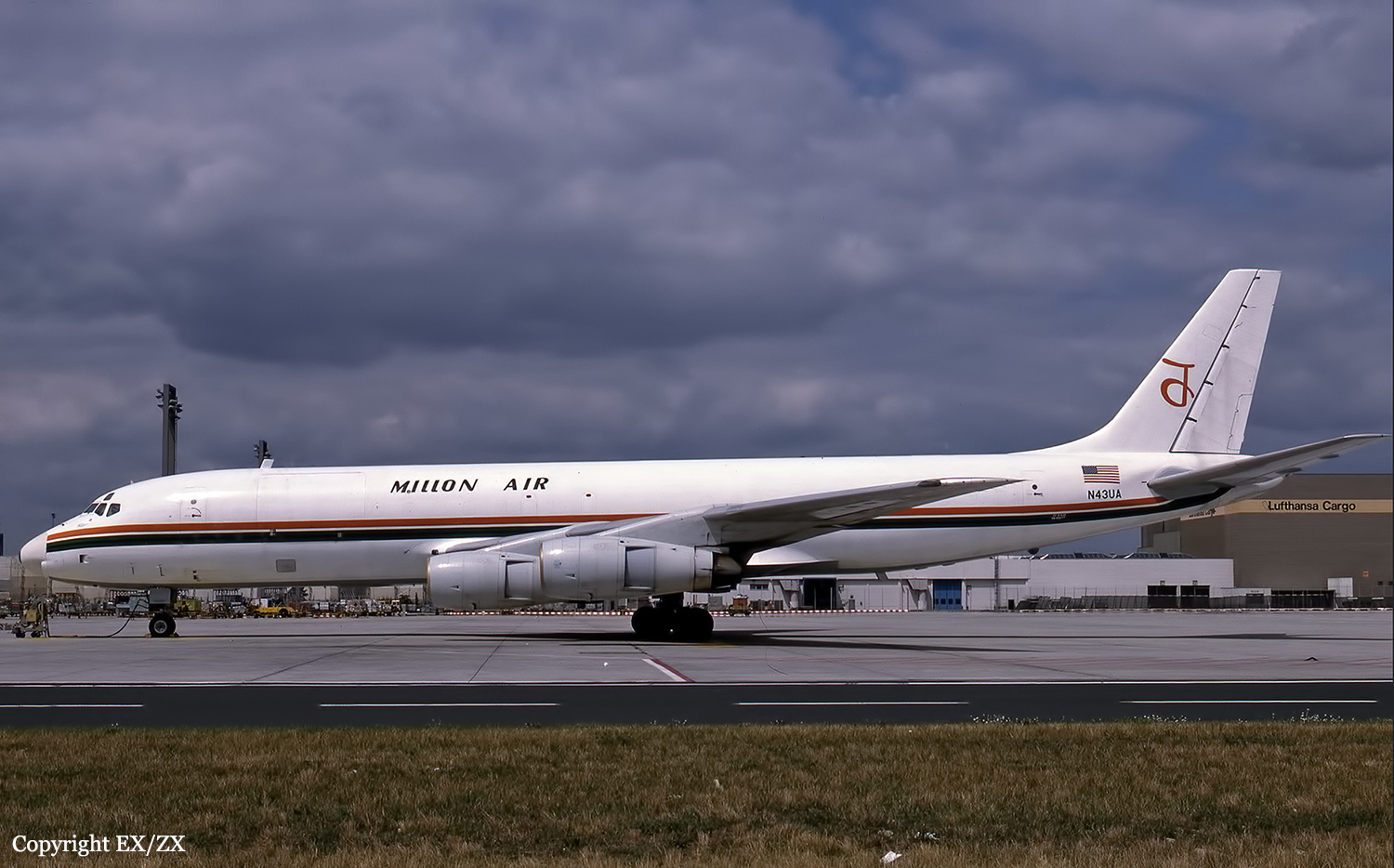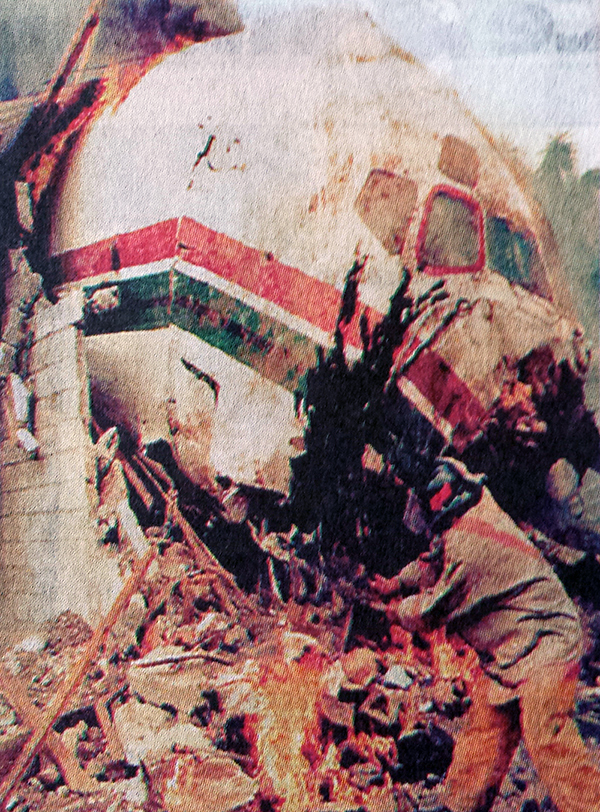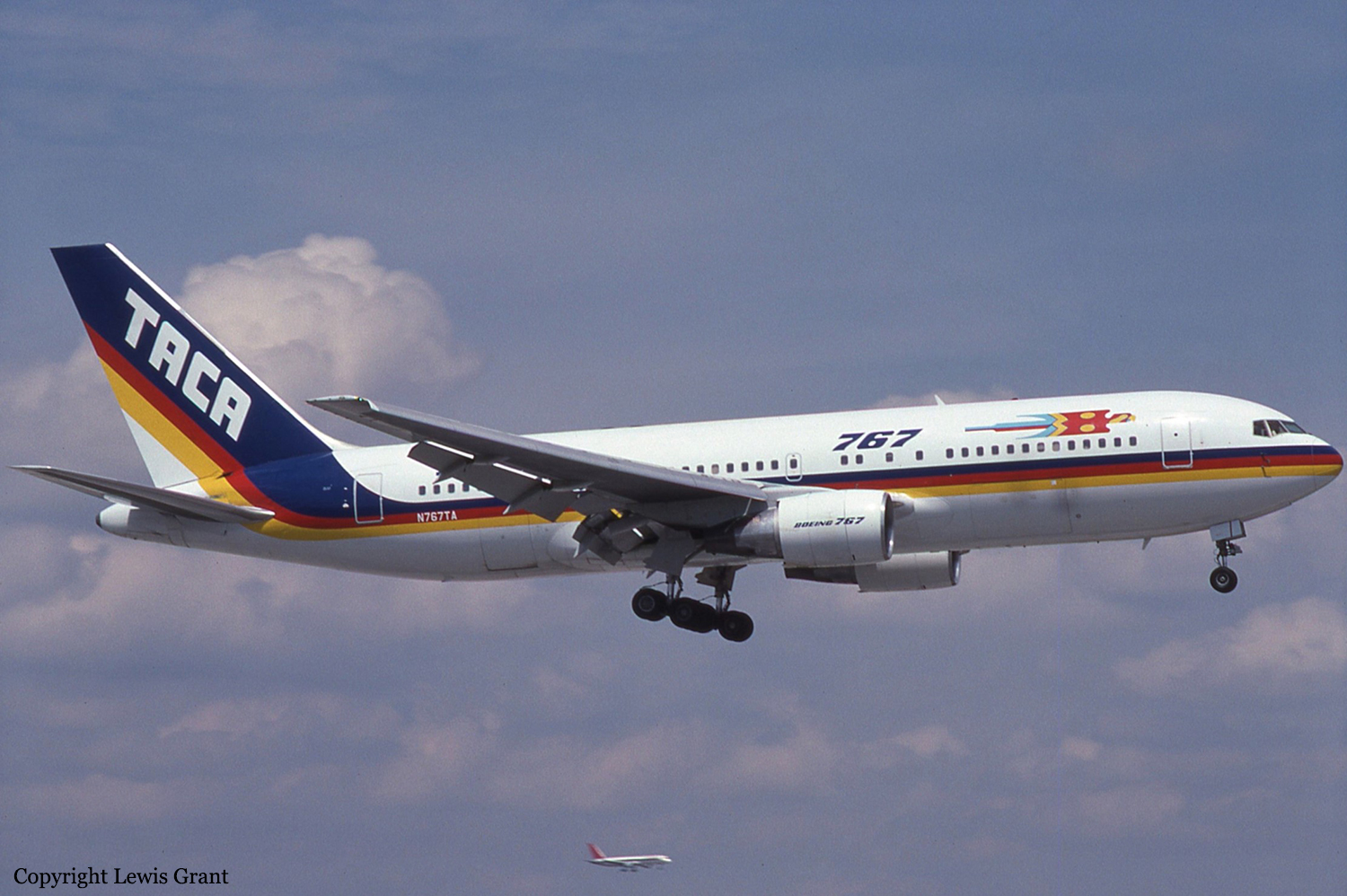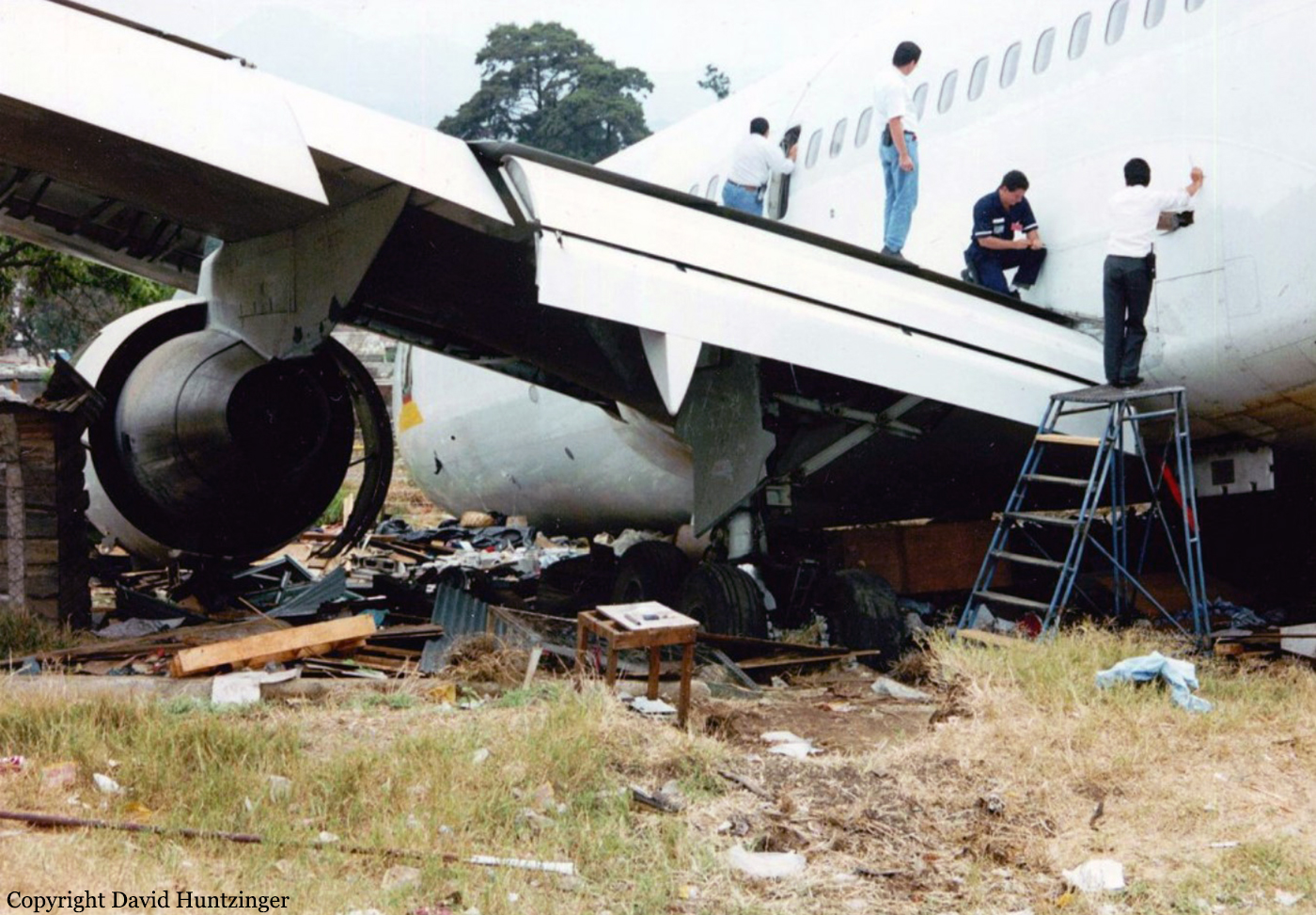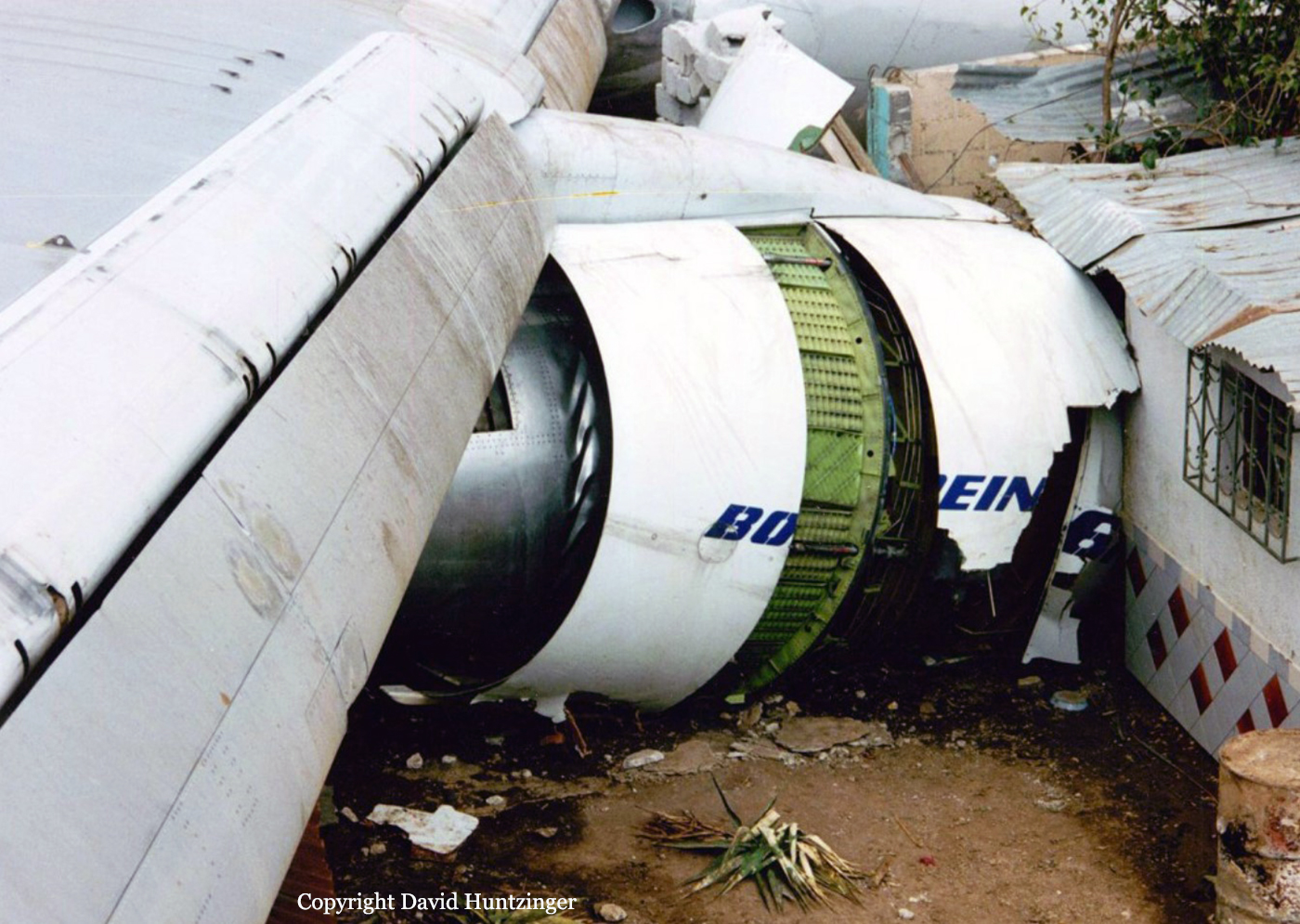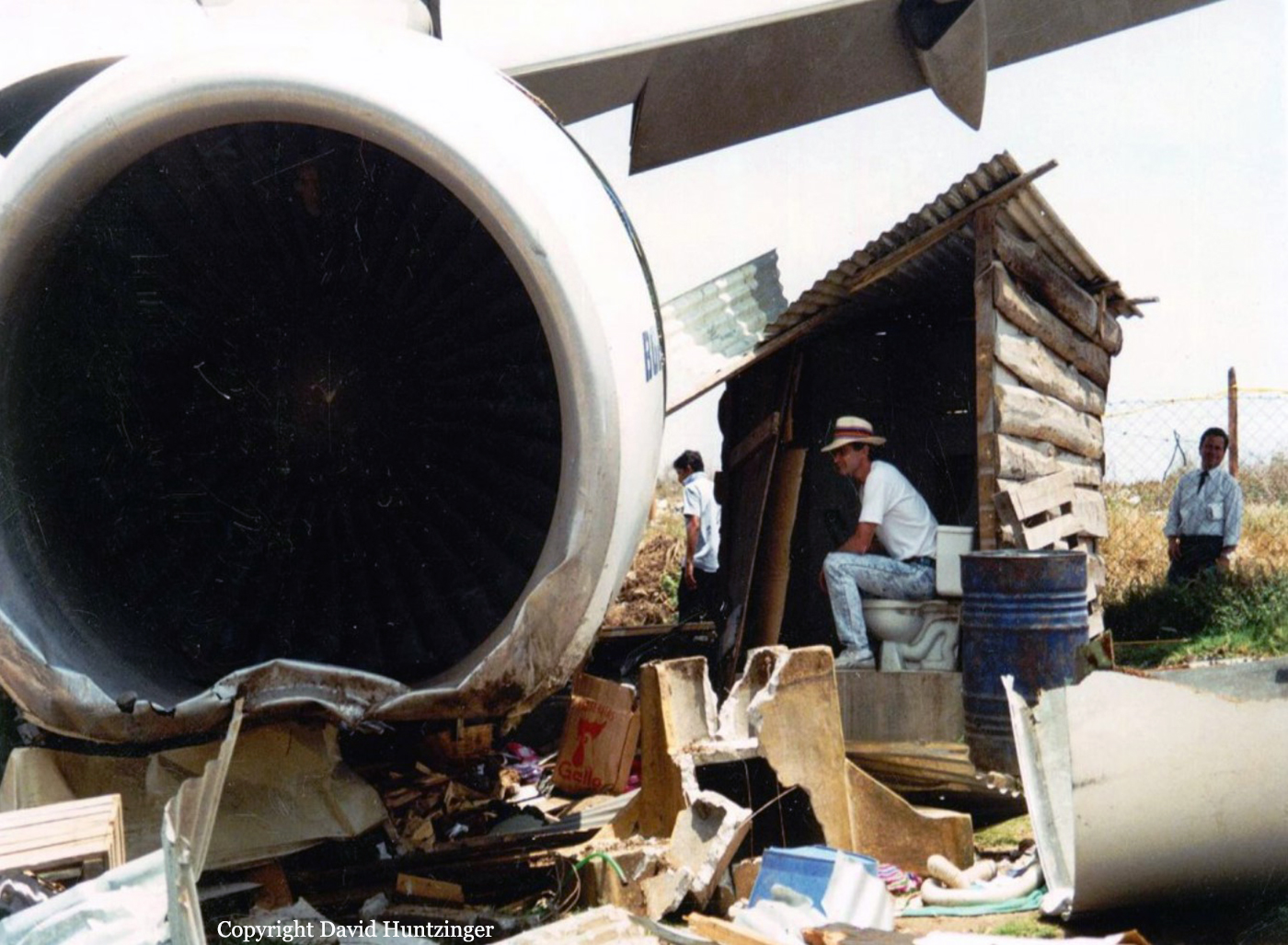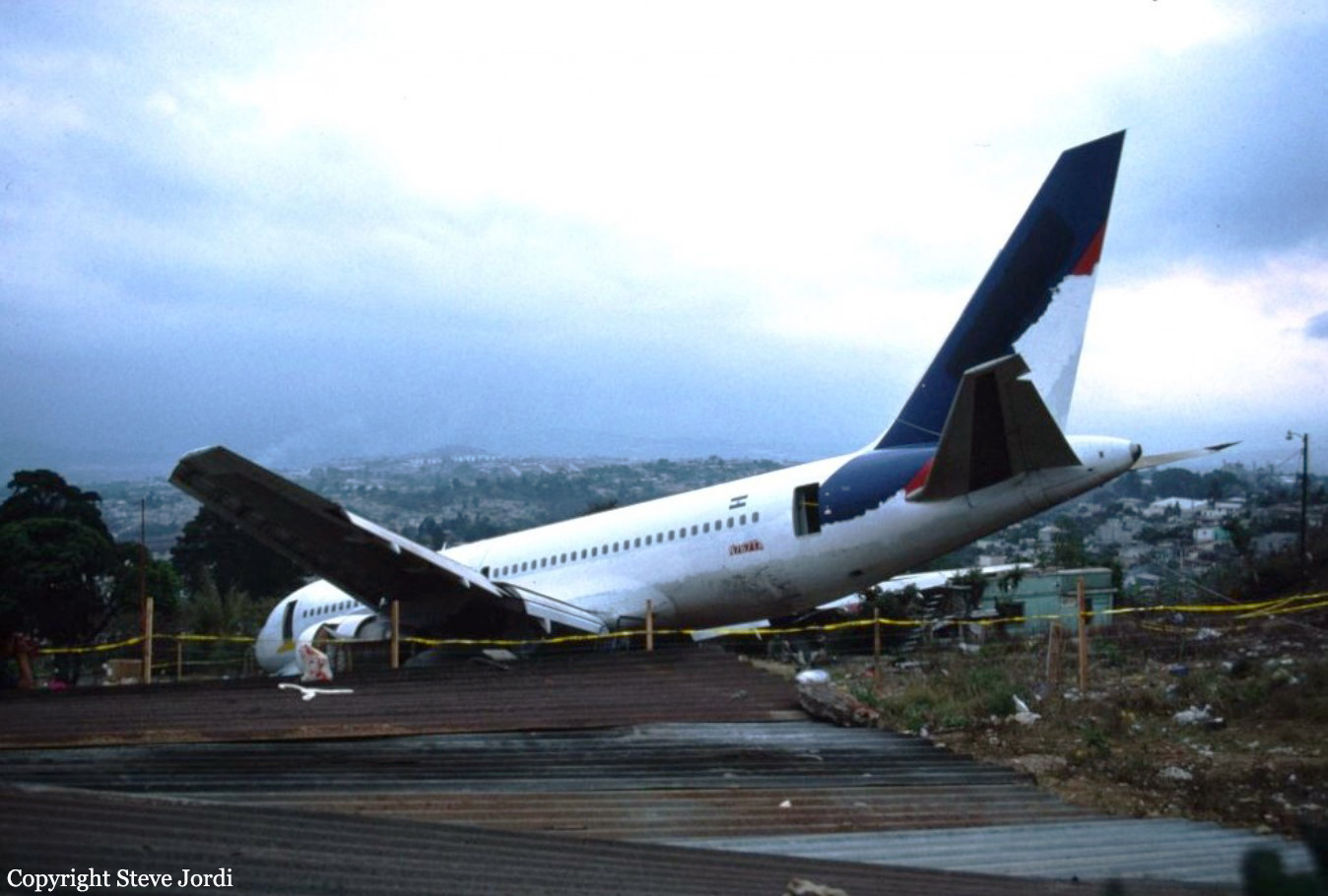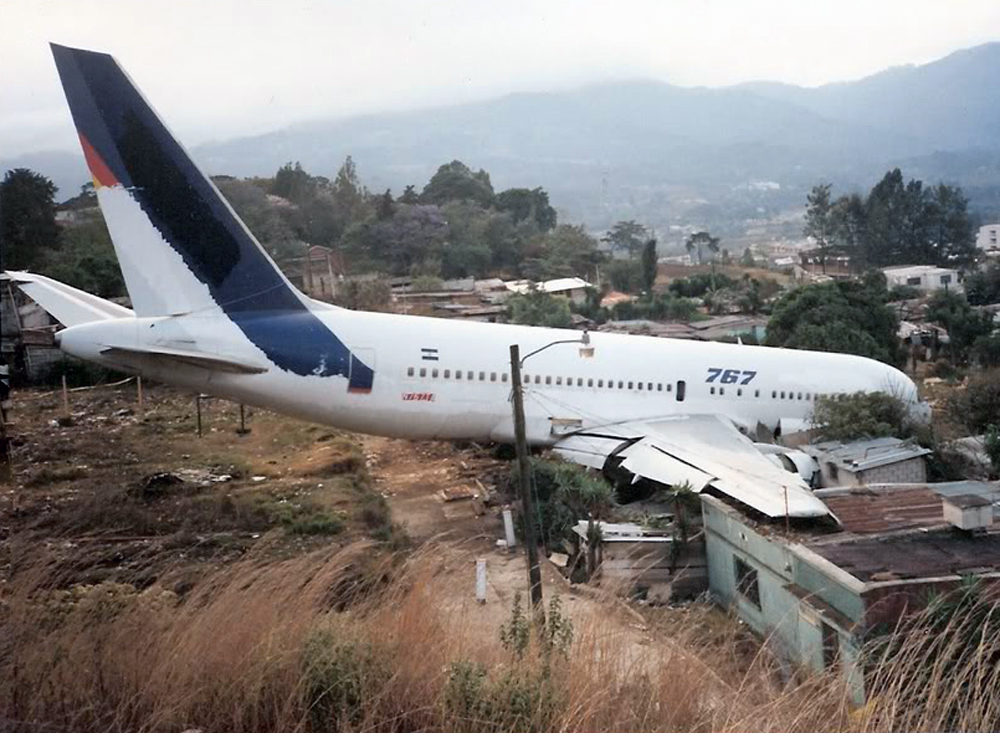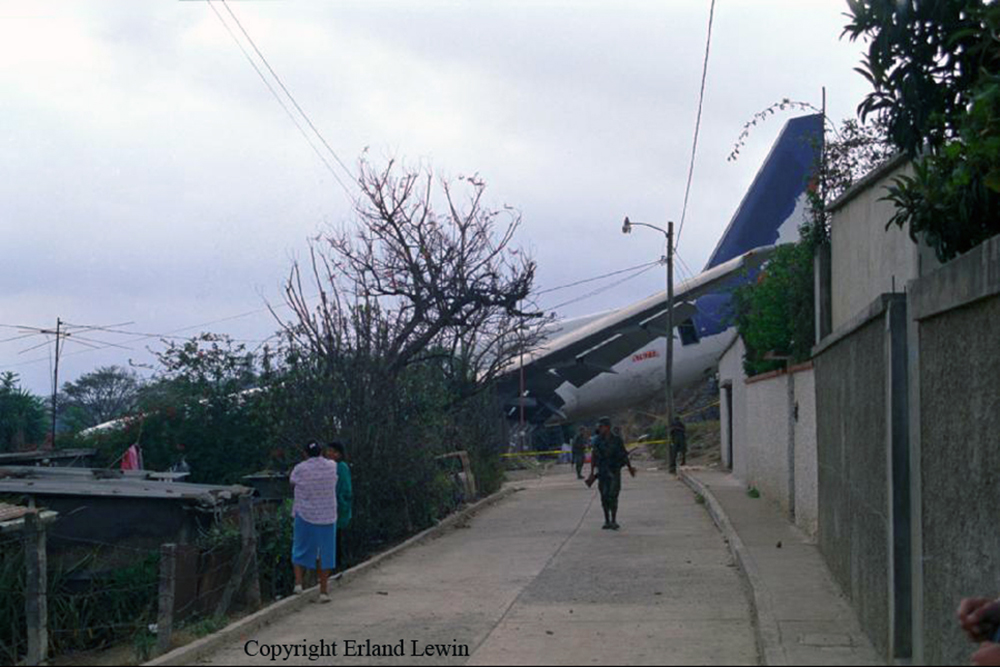Crash of a Quest Kodiak 100 in Guatemala City: 2 killed
Date & Time:
Nov 8, 2020 at 1233 LT
Registration:
TG-SMT
Survivors:
No
Schedule:
Guatemala City – Cobán
MSN:
100-0080
YOM:
2012
Crew on board:
1
Crew fatalities:
Pax on board:
1
Pax fatalities:
Other fatalities:
Total fatalities:
2
Circumstances:
The airplane was engaged in an humanitarian flight from Guatemala City to Cobán, carrying one pilot, one passenger and a load consisting of food and essential products. After takeoff from Guatemala City-La Aurora runway 02, while in initial climb, the airplane entered an uncontrolled descent, impacted trees and high tension wires before crashing in the 4th Avenue located in the Zone 9 district, approximately 980 metres from the end of runway 02. The aircraft was destroyed by impact forces and a post crash fire and both occupants were killed.
Probable cause:
The following contributing factors were identified:
- The demand for food and the population's urgent need for aid likely led the crew to make the erroneous decision to increase the load and materials for transport.
- The aircraft exceeded the permissible flight load capacity, 8,055 lbs instead 7,255 lbs.
- The probable shift of the cargo toward the rear of the aircraft negatively affected the center of gravity, disrupting the minimum weight and balance requirements, which prevented the aircraft from climbing and maintaining proper flight.
- The demand for food and the population's urgent need for aid likely led the crew to make the erroneous decision to increase the load and materials for transport.
- The aircraft exceeded the permissible flight load capacity, 8,055 lbs instead 7,255 lbs.
- The probable shift of the cargo toward the rear of the aircraft negatively affected the center of gravity, disrupting the minimum weight and balance requirements, which prevented the aircraft from climbing and maintaining proper flight.
Final Report:
